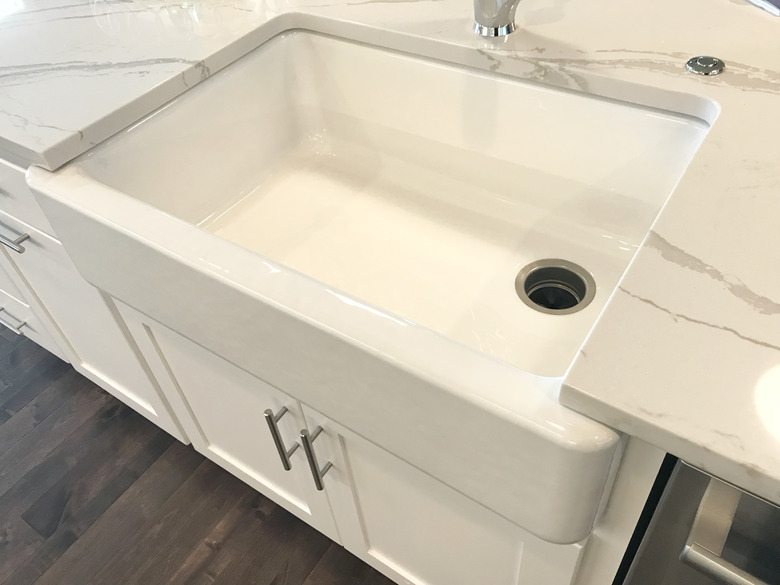How To Fix A Clogged Drain With Standing Water
We may receive a commission on purchases made from links.
Most people take their plumbing for granted until the sink refuses to drain or that relaxing shower ends with ankle-deep water that won't go away. Clogged drains are part of life but don't reach for a chemical drain-clearing product. The caustic chemicals can be dangerous for you and your plumbing. Other clog removal methods offer a safer option to get the water flowing again.
Causes of Clogs
Causes of Clogs
Sinks and bathtubs can become clogged due to debris going down them. Hair is often the cause of a bathtub drain clog since it can form a tight clump, but soap scum, dirt, and other debris you wash off your body can also build up in the mass. Bathroom sinks can get clogged due to hair as well as beauty products that might wash down the sink. In the kitchen, the common culprit is food, including grease that hardens in the pipes and chunks of food that wash down the drain.
As the gunk builds up, you might notice that the water starts to drain more slowly than normal. It can eventually become so clogged that no water gets through, which results in standing water.
Hot water can clear some clogs, although you should use caution when pouring hot or boiling water down drains. The heat can damage or weaken plastic plumbing components. However, if there's already standing water, pouring in more water won't help and can make the situation worse. The same goes for commercial or homemade drain cleaners, like vinegar and baking soda, which won't likely make it through the water to reach the clog. Mechanical removal methods are usually the most effective.
Using a Plunger
Using a Plunger
You're probably used to reaching for a plunger when you have a toilet clog, but they can also loosen the gunk in your tub or sink drain. A standard cup plunger works best on tubs and sinks since the bottom is flat and allows a good seal around the drain. Position the cup over the drain and plunge the drain several times to see if you can get things moving. Don't use the plunging method if you've already put drain opener in the sink. Plunging often causes the water to splash, so you could get it on your skin or in your eyes.
Using a Drain Snake
Using a Drain Snake
Your next option is a drain snake, sometimes called an auger. A long cable goes down into the drain, and the hook or cutter on the end helps break up the clog. You'll need to remove the strainer or stopper before feeding the snake into the drain until you reach the clog. Don't force the auger past the clog. Instead, rotate it once you feel resistance.
Removing the Trap
Removing the Trap
If you're dealing with a sink clog, you can easily access the trap beneath the sink. It's the curved piece in the pipe, and it's where a lot of sink clogs occur. If you can't loosen the clog with a plunger or auger, you can disconnect this section and clean it out manually. Scoop out as much water from the sink as possible and dump it in a drain that's working to minimize the mess. Remove everything from underneath the sink and place a large bowl or pan underneath the trap to catch any remaining water.
Each side of the curve should have slip joint nuts, which you can unscrew. If they don't come loose by hand, use tongue-and-groove pliers or a strap wrench for a little help. Loosen the slip joint nuts until you can remove the trap. Push a rag into the wall pipe to keep sewer gases from entering your bathroom.
Use your hand, a bottle brush, or another tool to push clogs out of the trap. Check the section coming from the sink to see if there is any clogging in that portion that you can dig out or push through. Clean the trap in another sink or in the shower to remove any remaining grime. Put the trap back in place, tightening the slip joint nuts by hand plus another quarter turn with a wrench or pliers.
